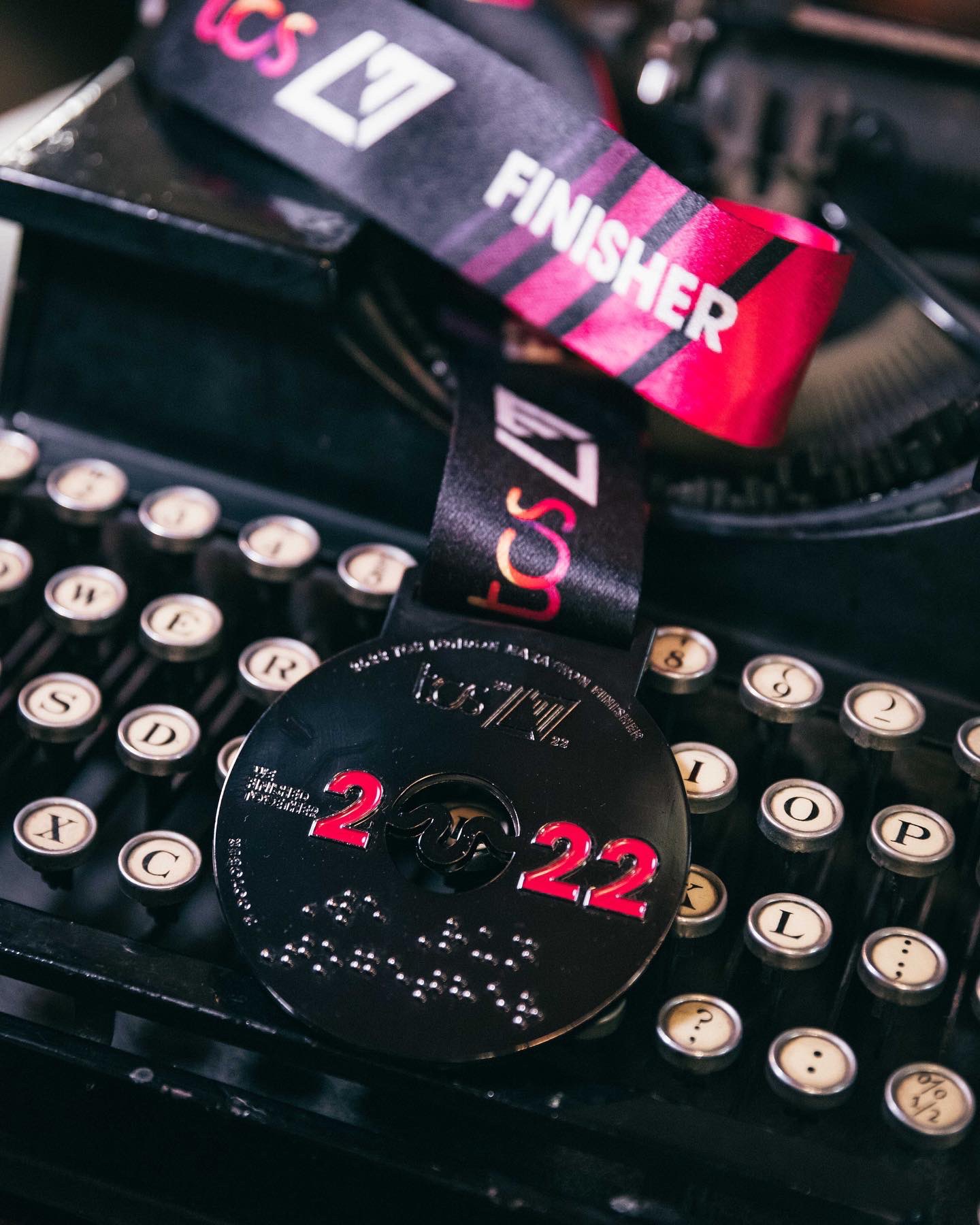Getting punched hurts. Then you hug afterwards. It’s a weird pastime.

Going through divorce sucks so I’ve made sure to pack my year with longer term projects to give me focus. I ran four 50 mile races as part of the Centurion Running Slam. Normally these races run until November but due to some changes for 2023 the last race was in September. I needed something to fill that sucky void between Autumn and Christmas and stumbled on a Facebook Ad for Ultra White Collar Boxing (UWCB). It started the Monday immediately following my last race. I was intrigued. Everyone has watched Rocky and wondered what it would be like to step into a ring. I figured if I was going to find out then this was the year.
So what is UWCB?
It’s a fund raising event held in over 100 cities across the UK. Beginners train twice a week for 8 weeks, to take part in a real boxing match in front of a 1000+ crowd in a black-tie event.
Cost
Cost to take part and train is zero but you have to commit to sell 10+ tickets. These are around £25 for standing for £45 for sitting at VIP tables. You also need to raise at least £50 in donations. If you don’t make the required sales by certain deadlines you’ll be kicked out of training.

Equipment
The UWCB website sells an equipment set that includes all you need for training or you can buy it elsewhere.
160z boxing gloves – these are for training only, on the night you will be provided with the UWCB gloves in blue or red for your corner.
Hand wraps – needed for the fight, many wear them in practice, I kept forgetting.
Gum shield – needed for every session after week 2. Get used to them. I nearly vomited on the dog when trying mine in the kitchen.
Shoes – you can train in socks or clean trainers (not the one’s you walked in with). Proper boxing boots are relatively cheap. I got mine on Vinted for about £8. These are boot style to support ankles and with a minimal sole so reduced risk of ‘falling off’ the shoe as you twist and turn. For the fight you will need some sort of shoe.
Shorts – In training any shorts will do. For the fight you want something that will make you feel like a boxer. Two weeks out from the fight you’ll know your colour and can get shorts to match. Again mine were about £3 from Vinted. Proper boxing shorts have a clear waistband that helps denote your waist and the ‘no punch zone’.
Top – any top for training. It gets HOT in a gym so lighter the better. For the fight they provide you with your vest with fighter name and any sponsor logos on.
Groin guard/box (for the men) – required for the fight only. At least one boxer on the night caught a fist to the nuts and even with a box was a little discomforted.
Chest protector (for the women) – Yeah I have no idea how they work but designed to protect the boobs.

Training
Twice a week, for 8 weeks. In my case it was 8:30pm on Monday and Wednesday. Just enough time to get home, fall asleep on sofa and regret having to go back out in the cold to get punched. You need to attend at east 50% of sessions. I’d recommend attending all. There will be key dates to attend including sparring (so they can match you up) and weigh-in.
Fight day packing –
Trainers/boots
Shorts
Gumshield
Groin Guard
Hand Wraps
Wash bag for shower
Towels x 2 (1 to take to the ring with you and 1 for afterwards)
Smart Clothes and shoes for after your fight
Food – some will be waiting a while to start. Even the first fighter is likely 3.5hrs from arrival to being ready to go
Water for the fight – small sports cap bottle
What’s it actually like?
Odd. You bundle in a sweaty gym, with a mix of entrants from cocky 18 year olds made of pure muscle and sinew to overweight bald blokes living out a mid-life crisis (me). The oldest entrant I believe was 56. He was hard as nails. Women are actively encouraged but often a far smaller number. For mine it was about 20 women and 100 men. A couple will have done a previous event and either caught the bug or had scores to settle. You have to be fit to fight so 8 weeks of perfect training could go to waste if you break a rib the week before and then need to try again the next time around.
The first few sessions are getting you comfortable with basic punches and moving around. They might do a fair amount of boot camp style drills to get your fitness up. Many will say the training will leave you the fittest you’ve ever been and it may well be true. Some entrants struggled to jog on the spot in the first session. In my case I had the base fitness from running, no upper body strength and a dodgy knee from the last 50 miler so I finished the 8 weeks having hurt leg muscles I never knew I had and unable to raise my left arm without grimacing.
Initially you’ll do very slow and gentle drills with partners to learn the techniques. One throws a series of punches into the gloves of the other, then repeat. They’ll gradually build in intensity and complexity and include blocks and slips to move out the way. Some drills will be purely one side, others your partner will be encouraged to punch (lightly) back if you drop your guard during a move as a reminder.
Somewhere around week 4 you’ll have your first sparring session. This is where you pair off to someone and have to go it alone, no drills, just try and punch them and avoid getting punched. If you’ve been a scrapper from school days this is probably easy. If you’re a spindly armed runner who never had brothers to rough house with it’s very unsettling being encouraged to brawl and potentially hurt a fellow grown up. This sparring will follow a friendly chat from the coach where they’ll inform you that every hit to the head will cause a small degree of brain damage and invite anyone having second thoughts to head home. It is very tempting.
The point of sparring is to improve technique and simulate the fight, not to knock chunks out of each other so it’s down to you and your partner to communicate, advise how hard you intend to go and let them know if it’s too much.
A couple of times they’ll run through simulations of the night with 2 minutes of drills or sparring, 1 minute recovery, then repeat 3 times. 6 minutes of exercise with breaks sounds like nothing, especially to an endurance runner but they are not easy and it was noticeable how many struggled, me included.
The weigh-in
In week four you’ll get weighed to establish your group. The coaches will likely have cheesy mugshots with your name, weight and age to help them eventually pair you up. Weight isn’t everything but is a quick way to group you for sparring sessions. In an ideal world you’ll be halfway to be fit and a decent shape. I was still gaining weight post-ultra as dodgy knee meant I couldn’t run and as hard as the boxing sessions were, two hours a week wasn’t enough to keep the belly away.
I can hear music
Two weeks out you need to submit your entrance music. Every fighter is announced and enters through the smoke to an arena echoing to their chosen jam. You’ll only get about 30 seconds played so nothing with a long intro.
Match Up Night
With about a week and half left, you attend an extra event, in my case at Pop World where they finally announce who you’ll be fighting. This is based on weight, age, height, fighting ability. Having spent the last few weeks sparring with those of the same weight, it’s a relief to see the double hard nutters paired off as they gradually whittle down. I was paired with Paul, a lovely chap I’d sparred a lot and close ability. He was 5 years my junior though so had better reflexes. We were in ring 2. For Milton Keynes event they had two rings running at the same time. I was in blue corner and Paul in red. For the remaining training sessions you’re not allowed to spar with your matched fighter. In reality a lot of the last week is very gentle as nobody wants to inflict an injury in sparring that ruins two peoples fights. Some fighters won’t be paired up and no match exists so a stand-in from another UWCB locally will be sought out.
The Arena
It will vary but for Milton Keynes it was at Planet Ice (an ice rink) so obviously cold. The set up was professional with two rings, lights, smoke machine, sound rigs and announcers. It’s the closest you’ll get to walking out for a professional bout. They set up two huge bars but from what I saw on the night they were not enough to cope with the demand.

Dress Code for Spectators (and you after the fight)
Smart dress is a must. Smart shoes, trousers, shirt and tie is a minimum. Dresses or suits for women. No Jeans, chinos, check shirts or trainers will be allowed into the venue.
Fight day itinerary
May change for your event, so this is a guide only
1pm – Boxers arrive for medicals – they’ll check blood pressure and pulse and ask questions on allergies, medications etc. Only once you pass are you confirmed to fight. Do not drink energy drinks before and spike your heart rate.
2:30pm – Organiser’s talk through
Sometimes from 3-4pm they will announce the running order. Suddenly you know if you’re fighting at 4:30pm or closer to 10pm.
3.30pm – Doors open for VIPs
3:50pm – Boxers attend meeting with the referee and paramedics
4pm – Doors open for standard tickets
4.15pm – Ring Parade – Reds and Blues are grouped and move out into the rings to be greeted by adoring fans
4.30pm – First fight – Rounds are 3x2min with 1min gaps. Including entrance music, awards and general messing it’s around 12-13 minutes between fights so if you’re 12th fight you’re probably going to be 2.5hrs in.
The day is a lot of waiting around. Wait for a medical, collect your fight night tee, wait for the talk through, wait for the running order to be announced, wait for the referee talk.
You’re allowed to head out to mix with your family and friends before your fight but need to be back warming up 3 fights prior to yours.
As Paul and I were fight 12 we had a couple of hours to kill so mixed with tables before getting ready.
The warm up area is hidden behind a curtain and where fighters are fitted for headgear – you have to wear this, but won’t have in training. It’s not hugely uncomfortable or restrictive. You’ll also get the colour coded gloves put on. Then do some light practice with a coach, and try not to freeze to death in an ice arena. The event supplies corner teams who’ll carry your water bottle and towel so you just have to wait for your cue music and march out like a fighter/lamb to the slaughter.

The fights have judges just like the real thing. The referee is purely there to protect each of you, ensure rules are followed and run the event, unlike football he has no say in scoring. Paul and I fought well. He got the better punches but I felt I got more in and pushed the fight. In the end he was awarded it on points and after 6 minutes of trying to batter each other (getting punched really hurts) we congratulated each other and hugged it out before being whisked away for a post fight medical. As expected the 6 minutes went quickly, although the end of each round was tiring and it was evident in other fights that some struggled to do much in the final round.

I was asked in my medical if I had any injuries whilst blood dripped from my nose. It’s the day after and still too swollen to see if broken or not. I also may have a cracked rib. Ah well.
Overall it was an amazing experience and I don’t regret it. It’s also shown how much I need to improve on my overall fitness, not just running, and convinced me that if a bar fight breaks out I’d be best to run away.












































































































